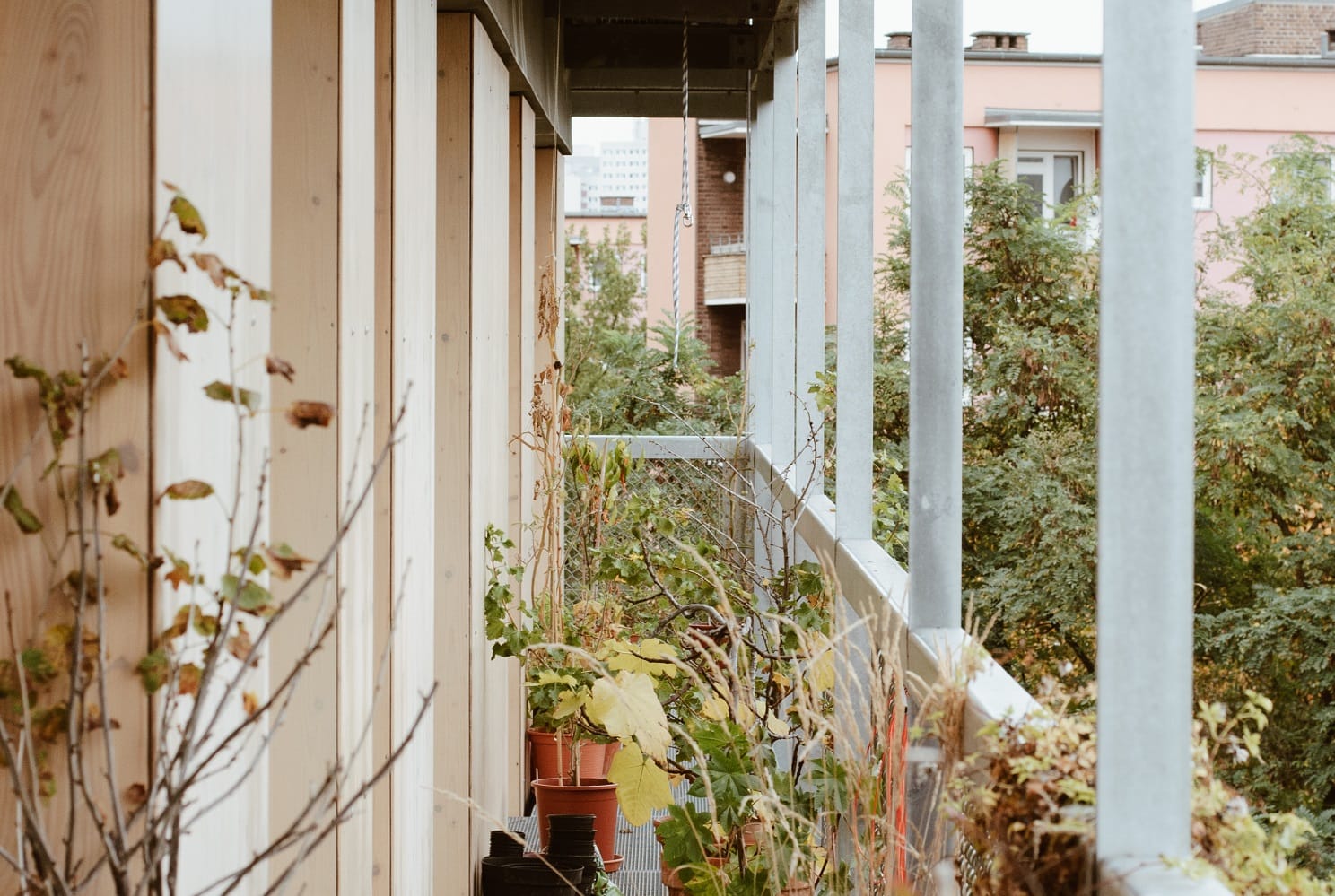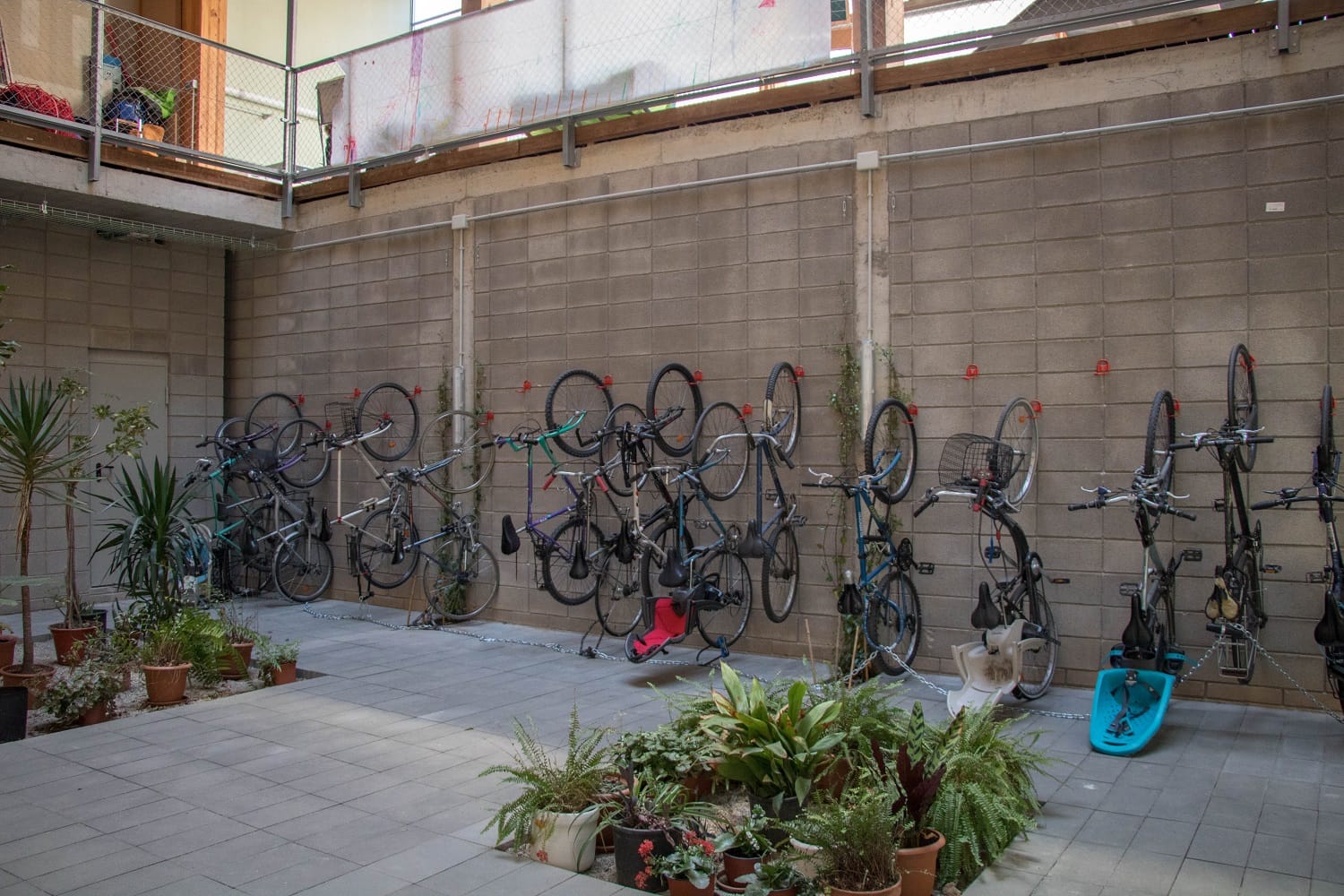What’s the best way to tell area residents about plans for a new asylum shelter nearby?
The government should tell communities directly about plans for new asylum shelters, some activists and politicians say.
The CoHousing Here! event in mid-June combines policy talks with workshops, successful examples from elsewhere and lessons from Ireland so far.

The biggest difference between the mammoth shared-living blocks being put forward by developers such as Bartra, and cohousing models, boils down, in a sense, to who gets listened to.
Shared living is mainly speculative, said Padraig Flynn, of Self-Organised Architecture (SOA), on Friday, in a meeting room at the Fumbally Exchange in Blackpitts.
“People who live there have no agency or input of the design or the long-term management of the building,” Flynn says.
Cohousing is the opposite: it’s resident-led, from design to management. “It gives people an opportunity to decide where they cut costs, what’s important to them, and what they don’t actually need,” he says.
“They’re two completely different concepts. But the wording is almost identical so it becomes very confusing for people,” said Flynn,
The CoHousing Here! event in mid-June, organised by Flynn and others at SOA, should help get that message out – and further open up debates around future affordable housing in the city.
With speakers from six other European countries, as well as the Land Development Agency and Dublin City Council, it’ll combine policy talks with workshops, successful examples from elsewhere and lessons from Ireland so far.
It’s about “how we in Ireland want to live as a society into the future”, Flynn says. “How we approach the quality of home as opposed to pure numbers of units and cost.”
The eight members of SOA are collaborative architects, although some have backgrounds in other areas, too, such as finance, says Flynn. “We were set up to kind of challenge this notion of homes as speculative commodities.”
For many architects, speculative housing – where the developer decides everything – is a problem, he says. “You almost never have any input or feedback from people who are going to live in those projects at the end.”
Alongside the shared-living versus cohousing confusion, there are other misconceptions that SOA are trying to dispel.

There’s a fear in Ireland that cohousing means sharing everything, says Flynn. “A bit like coliving that they just get a room, or bedroom, and everything else is open.”
But it’s not. Everybody gets a private apartment, and chooses to share some space and facilities. What, exactly, is shared varies based on what people say they want when the designs are drawn up, he says.
It could mean bookable shared guest apartments so not everybody has to shell out on individual spare rooms. It could mean meeting rooms, open to the wider community.
It might mean shared washing machines, or gardens. “There’s no need to replicate those things for every individual,” says Tom O’Donnell, another member of the group.
Current plans for patches of state-owned land in the city include quotas for affordable housing.
In their last term, councillors on Dublin City Council, after negotiations with the Department of Housing, agreed there should be 30 percent social, 20 percent affordable, and 50 percent private housing on some of the largest land banks owned by the city.
Public land sales through the Land Development Agency must deliver at least 10 percent social housing and 30 percent affordable housing, the Department of Housing has said.
But there are different versions of “affordable” housing kicking around – from the affordable-purchase scheme slowly rolling out, to cost-rental, to variations of cohousing and community land trusts of the types SOA have been working on.
“A lot of people who are engaged in different models see it as competition,” says Flynn. “But we see it as complementary.”

O’Donnell says he sees cohousing – with no developer profit, leases for land, and shared facilities tailored to community wishes – as an option for those households that wouldn’t qualify for a mortgage, yet are above thresholds for social housing but still need somewhere affordable and stable to live.
It could help with inequality among the elderly too, he says. Owning or not owning a home can make a massive difference in whether people have a comfortable retirement.
In Germany, there are two approaches to cohousing, depending on how wealthy, or not, people are, says O’Donnell, who video-called in from Germany.
One is where people with the cash get together, form a company and develop it themselves, he says.
The second approach is a cooperative, he says. “You make a cooperative and you sort of buy a share in the cooperative and you rent for your time living there.”
“That’s a model that’s much more suitable for people on lower, regular incomes. That’s something that we’re looking to develop for Ireland,” he says.
Flynn says SOA supports cost-rental too – the model that Dublin City Council has said it plans at St Michael’s Estate in Inchicore, and the Housing Agency’s pushed for its pilot on Enniskerry Road in Sandyford.
But cohousing models are for “people who want agency over their home long-term, to manage their properties long-term”, he says.
For cost-rental residents, “to a certain extent, it’s determined from above how secure the tenancy is and what their rent level is”, he says.
SOA was incorporated about a year ago. They’ve run gatherings, bring together groups working on cohousing in different corners to share what they know, and what barriers they’ve faced, says Flynn.
Pockets of people tried cohousing projects in the 1990s and 2000s, he says. Working without any state or financial support, many groups ran out of energy and dissipated, he says.
That’s why they’re trying to step in to get groups talking, and researching roadblocks. “Which when you come down to it is really access to land and access to finance,” he says.
In Germany, there’s more cooperation between local government and community-led housing groups, says O’Donnell. Particularly over land.
The city of Tübingen in Germany redeveloped large patches of vacant land, freed up when NATO military bases there closed with the end of the Cold War, says O’Donnell.
They developed a master plan of small plots, granted to small co-housing projects to develop individually, he says. “It became a sort of patchwork development, not this blocky redevelopment that you see all over Europe now.”
That land can be leased to the cohousing group for the long-term too, he says, on the model of a community land trust. “That obviously means you don’t have to buy the land,” says O’Donnell.
That means the land stays a state asset, and makes projects more affordable by limited land costs.
“That guarantees the long-term affordability of the project as well. You can impose conditions on the project, that you can’t go back to the open market and sell,” he says.
That’s something the Housing Agency did when it transferred land at Enniskerry Road to Dún Laoghaire-Rathdown County Council for its cost-rental pilot there. It wrote in that costs have to be kept down long-term.
For community land trusts, the land is put into a trust by the owner, and legally separated from projects built on it, says O’Donnell.
“You own the apartment, but you lease the land from the trust, and the trust is a community organisation, usually managed by the community, or the local authorities together with residents,” he says.
The idea has take off across Europe, he said.
The European Union-funded Sustainable Housing for Inclusive and Cohesive Cities project is supporting community land trusts in four cities, developing community-led affordable housing. “They’re developing different pilots for this approach,” he says.
Financing – which if expensive can also impact affordability – is the other big issue facing groups in Ireland, says O’Donnell. In Germany, projects are eligible for cheap loans from the state development bank KfW, and the rest of the money can be raised through ethical banks.
“They’re willing to loan to groups,” he says. “It’s quite an attractive model here [in Germany] as it’s fairly popular.”
If somebody defaults, there’s always somebody there to move in straight away – there’s always a waiting list, he says.
Dublin City Council did have a shot at supporting one cohousing project in the past, with its failed Dublin House project on Fishamble Street on the edge of Temple Bar.
At Cohousing Here!, Dublin City Council’s City Architect Ali Grehan will be talking about what happened with that project, says Flynn.
Representatives from Dublin City Council and the Land Development Agency – which is still developing its remit – will both talking, among other things, about what they’d be looking for from groups that approach them, and what might encourage them to lease or offer a site, he says.
Flynn says they’re looking into whether there needs to be state recognition of community land trusts, whether there needs to be a reference in legislation, or some other official recognition as a model.
But the conference, and other SOA events, are all about raising awareness, educating a wide bunch of people about the possibilities.
O’Donnell says the debate around housing in Ireland is often oversimplified. “People say, is it better to rent or to own? Or is it, how many units do we need?”
But there are models, such as cohousing, that can straddle renting and ownership – and concern themselves instead with the question of how people want to live into the future. “What housing means to these wider issues, about ageing and inclusivity in societies, about sustainability,” he says.
“When you look at what’s possible. At what’s been built, in Berlin, or in Britain, or Denmark,” he says. “The most amazing places to live, the most amazing ideas, how they want to live, how they want to live with other people.”
CoHousing Here! takes place on 14 June at Dublin Castle and 15 June at TU Dublin’s School of Architecture on Bolton Street. Tickets are €5 each day.
Get our latest headlines in one of them, and recommendations for things to do in Dublin in the other.